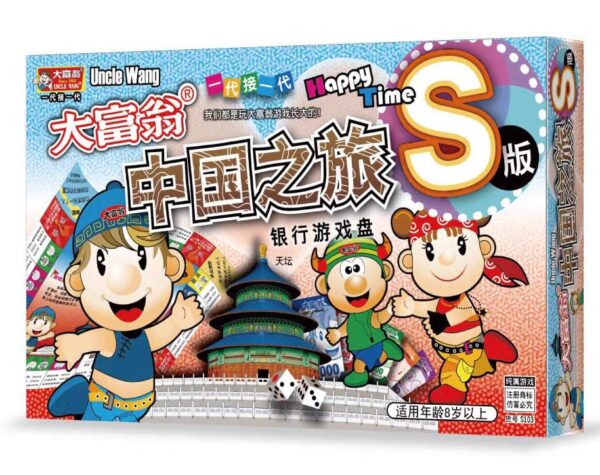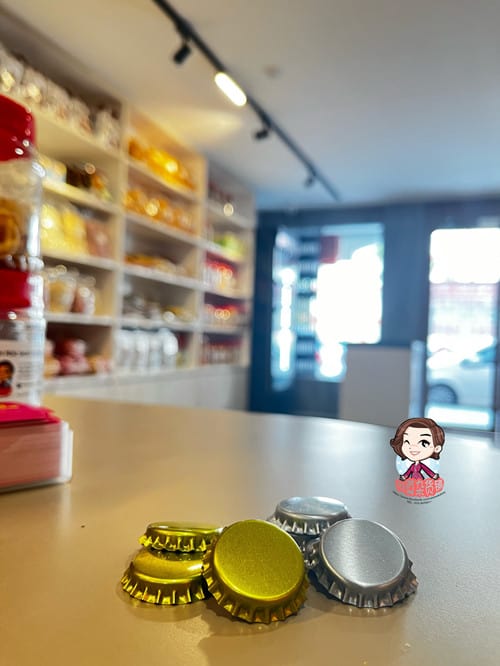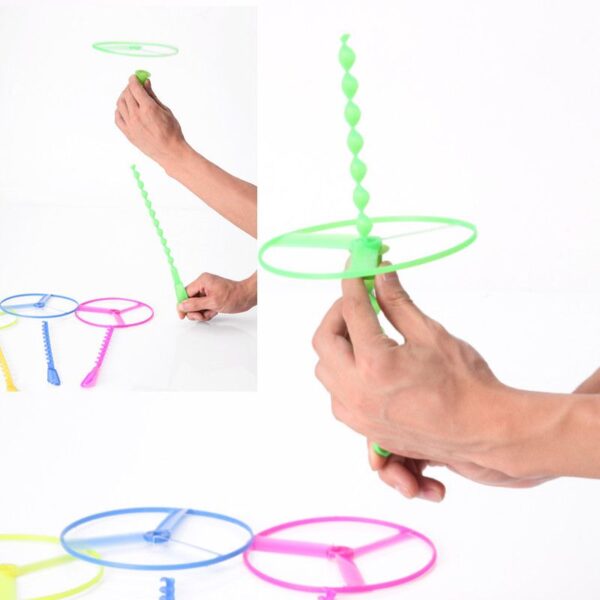Product Description
中文版:游戏介绍与详细玩法(S版)
一、游戏简介
“S版”即为 “Uncle Wang 大富翁 中国之旅 银行游戏盘” 的特别版本,主题围绕中国各地景点或城市(“中国之旅”)展开,并采用“银行游戏盘”机制:玩家通过银行管理货币、买卖地产、收租、破产淘汰,最后成为唯一幸存或拥有最多资产者获胜。该款适用于家庭亲子互动、益智娱乐。
二、组件(典型)
-
一块游戏棋盘,格子代表中国的城市/地标(“中国之旅”主题)。
-
起始资金若干(银行发放给每位玩家)。
-
银行区:设有纸币、银行账户、拍卖板块等。
-
若干玩家棋子(每位选一个代号)。
-
房地产卡或产权卡:对应棋盘上的可购买格子。
-
机会/命运卡或类似事件卡:当玩家落在特定格子时抽取。
-
建筑物或标志物(如房屋、旅馆,或该版本适用的标志)。
-
掷骰子或轮盘机制:决定玩家移动格数。
-
规则说明书。
三、游戏目标
成为最后一位未破产的玩家,或者在游戏结束时拥有最多资产(现金+地产+建筑物)者获胜。
四、游戏准备
-
将纸币、地产卡、事件卡、棋子、建筑物等整理好。
-
每位玩家从银行领取相同初始资金(例如人民币若干金额,盒内说明为准)。
-
地产卡对应棋盘中“可购买”的格子放置于银行区。
-
银行由一位玩家担任(可轮换),负责发钱、收租、拍卖管理。
-
所有玩家将自己的棋子放在“起点格”(通常为“出发”或类似标识)。
五、游戏流程
-
玩家轮流进行,顺时针或者按说明中的顺序。
-
掷骰子/旋转机制:玩家先掷骰子(或使用轮盘)决定移动格数。
-
移动棋子:按点数前进至相应格子。
-
格子处理:
-
若落在未被购买的地产格:玩家可选择从银行购买该地产,支付相应款项。若玩家放弃,则进入拍卖(银行开启拍卖,任何玩家均可竞价)。
-
若落在已被他人拥有的地产格:支付租金给该地产的拥有者(金额根据地产等级或是否有建筑物而定)。
-
若落在事件格(机会/命运/税务/监狱等):抽取事件卡或按格子指示执行动作(如支付罚金、获得奖励、移动至某格、停一回合等)。
-
-
建造与发展:当玩家拥有某一地产颜色系列的全部地产时(例如“北京、上海、广州”组合,依盒内地图而定),可在其地产上建造“房屋”或“旅馆”以增加租金(是否有建筑机制需参照S版具体说明)。
-
交易、抵押与破产:
-
玩家之间可进行交易:地产与现金互换。
-
若某玩家资金不足支付租金或罚款,可将自己拥有的地产抵押给银行、出售建筑物或与其他玩家商谈筹资。
-
若仍无法支付,则宣告破产,该玩家淘汰,其资产按规则处理(回银行或转给债权人)。
-
-
结束回合:玩家完成以上动作后结束回合。若其手牌、资金、地产状态超出规定(如手牌上限、资金超过某额度等)按规程处理。
-
胜利判断:当只剩一名玩家未破产或达到某预定终局条件时,游戏结束。此时计算资产最多者获胜。
六、S版特别提示
-
“S版”可能意味着该版本简化或小型化:如棋盘尺寸缩小、起始资金减少、游戏时间缩短。
-
银行游戏盘:强调银行集中管理现金、拍卖机制更频繁。
-
“中国之旅”主题:地产名称为中国著名城市或景点,可能附带中文说明更亲切。
-
年龄建议、玩家人数、预计时长,应参照盒内说明。一般适合 2–6 人,时间约 30-60分钟。
-
若本版本标示 “Q版”、“S版” 或 “银牌/铜牌”系列,则组件和玩法可能与经典版略不同(例如使用转盘替代骰子、或加入抢手卡机制)。
English Version: Game Introduction & Detailed Rules (S-Edition)
1. Game Overview
The “S-Edition” of the Uncle Wang Monopoly-style board game, titled China Tour – Bank Game Board S Edition, uses a Chinese-themed property map, bank-management mechanics, and auction features. Players purchase properties, collect rent, build, trade, and aim to become the richest or sole surviving player.
2. Components (Typical)
-
A game board with squares representing Chinese cities / landmarks.
-
Player tokens: each player chooses one.
-
Banknotes / currency and a Bank for managing money.
-
Property Title Deed cards corresponding to purchasable squares.
-
Houses / Hotels or building tokens (if applicable).
-
Event / Chance cards for special squares.
-
Dice or spinner mechanism for movement.
-
Bank area, auction mechanism.
-
Rulebook.
3. Objective
Be the last player remaining solvent (others bankrupt), or when the end condition is triggered, hold the highest total assets (cash + properties + buildings).
4. Setup
-
Prepare banknotes, property cards, event cards, tokens and building pieces.
-
Bank distributes equal starting cash to each player (specific amount per S-Edition rule).
-
Shuffle event cards, place on designated board space.
-
Assign one player as Banker to manage funds and auctions.
-
All players place their token on the “Start” square.
5. Gameplay
-
Players take turns in order (clockwise).
-
Roll dice / use spinner to determine how many spaces to move.
-
Move token accordingly.
-
Square action:
-
If the square is an unowned property, the player may purchase it from the bank. If declined, the bank auctions it to the highest bidder among any players.
-
If the square is owned by another player, pay rent to that owner — amount may vary by property level or building presence.
-
If the square is a special space (Chance, Tax, Jail, etc.), draw an event card or follow the instructions on the square.
-
-
Property development: If a player owns an entire color group, they may build houses/hotels (according to S-Edition rules) to increase rent value.
-
Trading and financial management:
-
Players may trade properties and cash among themselves.
-
If a player lacks cash to pay rent or fees, they may mortgage properties, sell buildings, or negotiate loans.
-
If still unable to pay, that player is declared bankrupt and eliminated; disposal of their assets is handled per rules.
-
-
End of turn: Turn ends when all actions are finished. If a player holds more cards or money than the allowed maximum (if applicable), they adjust accordingly.
-
Winning the game: Game ends when only one player is left or a set ending condition is met; the richest player wins.
6. S-Edition Specific Notes
-
The “S-Edition” may offer a streamlined experience (smaller board, fewer starting funds, shorter play time).
-
The bank game board emphasizes centralized banking and frequent auctions.
-
The “China Tour” theme uses Chinese cities/landmarks for properties, giving a local flavour.
-
Recommended players, age and play time: check box details; typical range 2–6 players, 30–60 mins.
-
If marked as “Q version”, “S version”, “Silver-label”, etc., components or rules may differ slightly from the classic edition (for example, spinner instead of dice, extra “snatch card” mechanics).







Reviews
There are no reviews yet.